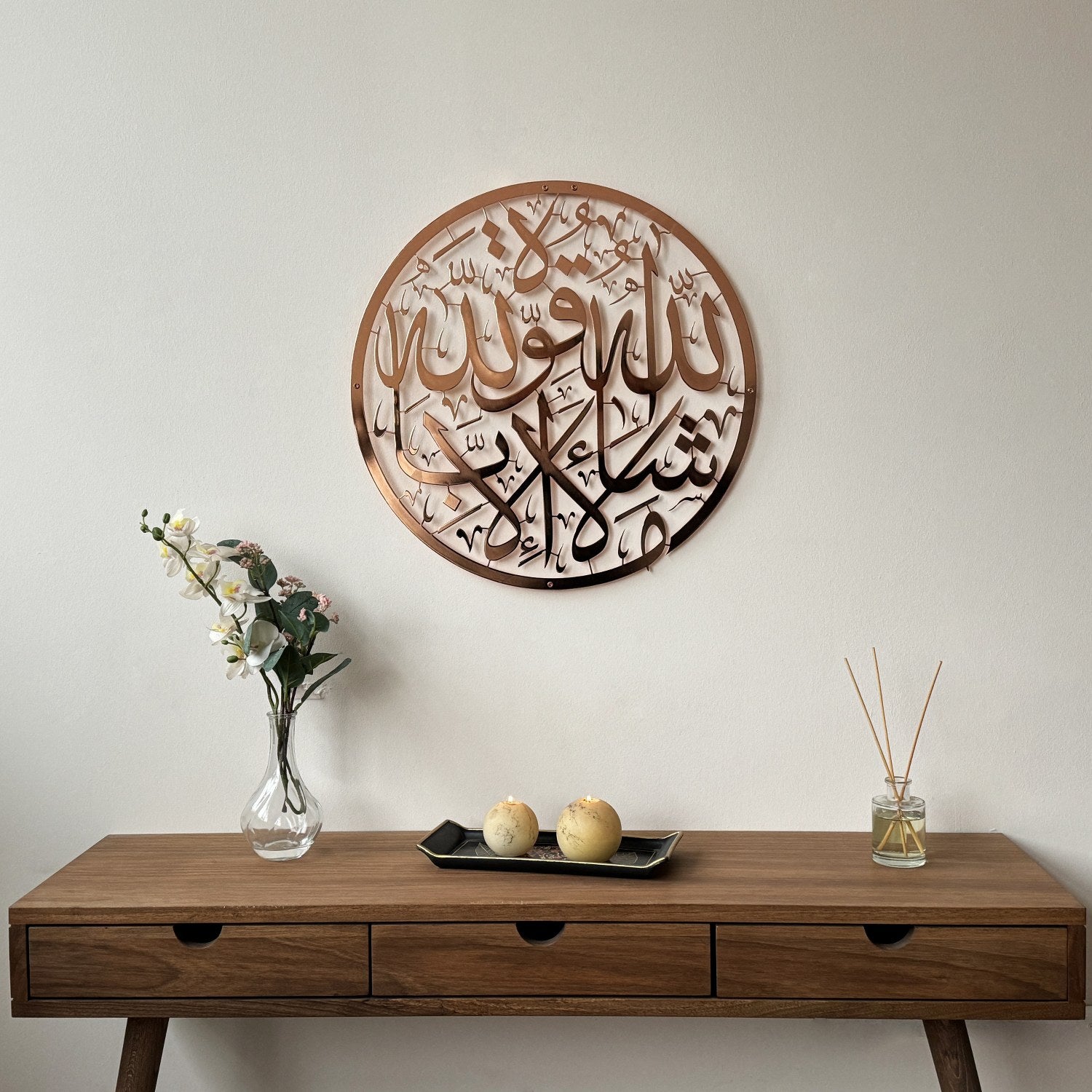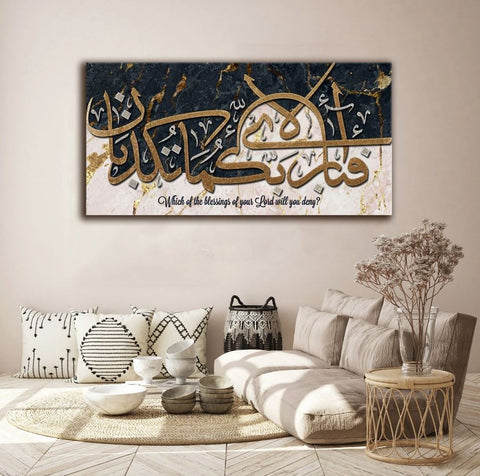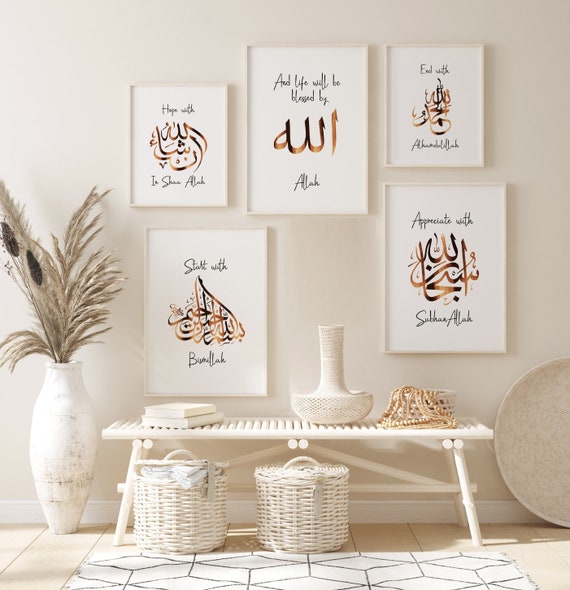Islamic art wall decor is not just a decorative choice; it is a reflection of cultural heritage, spirituality, and history. With its intricate designs, vibrant colors, and deep symbolism, Islamic art can transform any space into a serene sanctuary. In this comprehensive guide, we will dive deep into the world of Islamic art wall decor, exploring its significance, styles, and how to beautifully incorporate it into your home.
What is Islamic Art?
Islamic art encompasses a wide range of artistic expressions that emerged from the Islamic culture and reflects its beliefs, history, and values. Characterized by its intricate geometric patterns, calligraphy, and vibrant colors, Islamic art is a visual representation of spirituality and the quest for the divine.
Historical Background of Islamic Art
The roots of Islamic art can be traced back to the 7th century when Islam began to spread across the Middle East, North Africa, and parts of Europe. Each region adapted the art to reflect its unique culture, leading to diverse styles. Learn more about the timeline below:

| Period | Key Characteristics | Famous Artworks |
|---|---|---|
| Umayyad Period (661-750) | Introduction of architectural forms like mosques and palaces, use of geometric patterns | Great Mosque of Damascus |
| Abbasid Period (750-1258) | Flourishing of literature, quest for knowledge, and development of calligraphy | Blue Qur’an |
| Ottoman Period (1299-1922) | Integration of Persian and Byzantine elements, dominance of large-scale mosque architecture | Süleymaniye Mosque |
| Safavid Period (1501-1736) | Rich colors, intricate tile work, and floral motifs | Shah Abbas Mosque |
The Beauty of Islamic Art Wall Decor

Islamic art wall decor serves as an artistic expression that carries deep spiritual meaning. The use of patterns, colors, and textures creates a unique aesthetic that can enhance any interior space.
Key Elements of Islamic Art Decor

- Geometric Patterns: Repeating geometric shapes symbolize the infinite nature of Allah.
- Calligraphy: Arabic calligraphy, often featuring verses from the Qur’an, adds a spiritual touch.
- Floral Motifs: Nature-inspired designs reflect the beauty of creation.
- Tile Work: Colorful, intricate tile patterns can create stunning focal points.
Types of Islamic Art Wall Decor

Islamic wall decor comes in several forms, each offering its unique charm and aesthetic appeal:
- Canvas Prints: Affordable and easy to hang, canvas prints offer a variety of designs.
- Framed Art: Traditional and elegant, framed pieces can highlight intricate details.
- Wall Stickers: A modern approach, perfect for renters or temporary decor.
- Tapestries: Luxurious fabric that can add warmth and texture to a room.

How to Incorporate Islamic Art Wall Decor in Your Home
Decorating your home with Islamic art can create a peaceful and inviting atmosphere. Here are some tips on how to effectively incorporate these stunning designs into your space:

Choosing the Right Space
Identify the areas in your home that could benefit from Islamic decor:

- Living Room: Create a focal point with a large canvas print or framed artwork.
- Bedroom: Soft colors and intricate designs can promote a sense of calm.
- Office: Inspirational quotes from the Qur’an can enhance your workspace.
- Entryway: A beautiful tapestry or decorative tile can create a welcoming atmosphere.
Color Schemes and Styles
When selecting Islamic art, consider the color schemes and styles that complement your existing decor:
- Warm Earth Tones: Ideal for creating a cozy, inviting feel.
- Vibrant Colors: Can energize a space and make a bold statement.
- Monochrome: Sleek and contemporary, perfect for modern interiors.
Examples of Effective Combinations
| Room | Art Type | Color Scheme |
|---|---|---|
| Living Room | Large Canvas Print | Rich Gem Tones |
| Bedroom | Framed Calligraphy | Soft Pastels |
| Office | Wall Stickers | Black and White |
| Entryway | Decorative Tiles | Bright and Cheerful |
Pros and Cons of Islamic Art Wall Decor
Pros
- Enhances aesthetic appeal of your home.
- Infuses a sense of spirituality and peace.
- Supports cultural appreciation and understanding.
- Wide variety of styles to fit diverse tastes.
Cons
- Some pieces can be expensive.
- May require careful placement to avoid cultural misinterpretation.
- Specific styles may not blend well with certain decor themes.
Where to Buy Islamic Art Wall Decor
With the rise of e-commerce, finding high-quality Islamic art wall decor has never been easier. Here are some platforms to explore:
- Online Marketplaces: Websites like Etsy and Amazon offer a vast array of options.
- Specialty Stores: Local boutiques or specialized online stores often provide unique, handcrafted pieces.
- Art Galleries: Check if there are any galleries in your area that focus on Islamic art.
Personal Recommendations
As someone who has recently decorated their living space with Islamic art, I highly recommend checking out local artisans. The unique touch of a handmade piece can elevate your decor while supporting small businesses. Websites like Society6 and Artfinder also have curated selections of Islamic art that I found inspiring.
FAQs About Islamic Art Wall Decor
1. What styles of Islamic art are most popular for wall decor?
The most popular styles include geometric patterns, Arabic calligraphy, and floral motifs. Each style brings its unique essence, allowing for versatile decor options.
2. Is it appropriate to use Islamic art in non-Islamic homes?
Absolutely! Islamic art celebrates cultural heritage and creativity, making it suitable for any home. Just be respectful of the artwork’s significance.
3. How can I take care of my Islamic art wall decor?
Depending on the material, regular dusting and avoiding direct sunlight for fabric pieces can help preserve them. Always check the care instructions for specific items.
4. Can I find affordable Islamic art wall decor options?
Yes! Many online stores offer budget-friendly pieces, including prints and wall stickers that can beautifully enhance your space without breaking the bank.
5. How do I choose the right size of Islamic art for my wall?
Consider the scale of the wall and the surrounding furniture. A large statement piece works well in open spaces, while smaller pieces can create a gallery wall effect.
Conclusion
Islamic art wall decor is more than just a visual delight; it is a window into the rich tapestry of culture, spirituality, and creativity that has evolved over centuries. By thoughtfully incorporating these artistic pieces into your home, you not only beautify your space but also celebrate the diversity and depth of human expression. Whether you choose a striking canvas print, elegant calligraphy, or intricate tiles, let your decor tell a story and inspire a sense of peace and beauty in your everyday life.